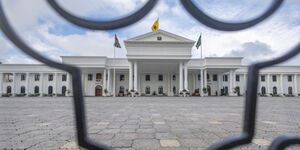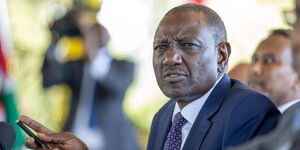Kenya's economic landscape has been a rollercoaster in recent months, with the shilling's performance reflecting the broader fiscal challenges facing the nation.
Despite the grim outlook from international credit rating agencies, the Kenyan shilling made a surprising recovery this week, ending at Ksh129.15 per US dollar, a notable improvement from Ksh132.22 the previous week.
The Central Bank of Kenya (CBK) highlighted this rebound, stating, “The Kenya Shilling strengthened against major international and regional currencies during the week ending August 1.”
This upturn coincided with a relatively calm period in Nairobi, as the city saw a respite from the anti-government protests that had rocked the capital for the last two months.
However, the brief reprieve for the shilling may be fleeting. Traders noted that the currency slipped slightly on Friday due to increased dollar demand from the manufacturing sector.
The upcoming review of Kenya’s sovereign rating by S&P Global on August 23 looms large, with the potential to influence the shilling’s trajectory significantly.
Currently, Kenya’s long-term foreign and local currency ratings stand at ‘B’ with a negative outlook, perilously close to junk status.
This apprehension is further compounded by recent downgrades from other major rating agencies.
Last month, Moody’s downgraded Kenya’s ratings to ‘Caa1’ from ‘B3’, citing the government's diminished capacity to implement fiscal consolidation.
This downgrade came in the wake of President William Ruto’s decision to withdraw planned tax hikes, a move prompted by mass protests.
Fitch Ratings also contributed to the bleak outlook, downgrading Kenya’s Long-Term Foreign-Currency Issuer Default Rating (IDR) to 'B-' from 'B'.
Despite this, Fitch acknowledged some positives, noting, “Tightened monetary policy is anticipated to keep inflation in check, providing some support for the currency.”
Early signs this week suggested a slight strengthening of the shilling, with commercial banks quoting it at 130.50/131.50, up from Friday’s closing rate of 130.75/131.75.
Traders anticipate further gains, bolstered by expected dollar inflows from tea exports.
The shilling’s recovery journey began in late January when it hit a historic low of Ksh162 to the US dollar. This turnaround was sparked by Kenya's partial settlement of the Eurobond debt due in June 2024, which eased fears of a potential default.
Since then, the shilling has clawed back significant ground, stabilising around the Ksh128 to Ksh130 mark, although it experienced volatility in July, with rates briefly spiking to Ksh134 to Ksh136 in forex bureaus and commercial banks.












